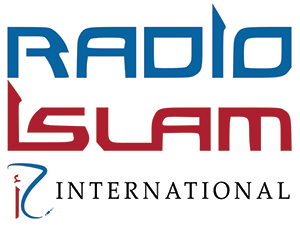Establishment of Makaatib in Madinah Munawwarah
Similarly, when the Noble Prophet ﷺ came to Madinah, efforts to set up Maktabs were made from the outset. The sole purpose being that the teachings of the Holy Qur’aan should also be made known to the people of Madinah. In fact this happened before the Prophet’s ﷺ migration to the holy city. He dispatched Mus’ab bin Umair RA and Abdullah Ibn Umme Maktoom RA. The latter was also a maternal cousin of the Prophet ﷺ, due to his marriage with Hadhrat Khadijah RA.
The first Maktab of Madinah Munawwarah
The Holy Prophet ﷺ selected these two companions and sent them to Madina with As’ad bin Zurarah RA. As’ad bin Zurarah RA was amongst the first persons from the Ansar to embrace Islam at the hands of the Prophet. He undertook the responsibility of taking Mus’ab bin Umair and Abdullah ibn Umme Maktoom RA, to Madinah for the purpose of teaching the Holy Qur’aan.
The second Maktab of Madina Munawwarah
The second Maktab of Madina was established by Rafe’ ibn Malik RA for the people of his tribe. This Maktab was located outside a large house. Here he started to teach the Holy Qur’an. This is the very place where later a Masjid named Masjid-e-Banu Zuraiq was erected. This place is located directly opposite Masjid Ghamamah. Surah Yusuf was the first Surah to be taught at this Maktab.
The third Maktab of Madina Munawwarah
A third place was Masjid Quba. Here the freed slave of Abu Huzaifah namely, Salim RA was Imam as well as teacher of the Holy Qur’aan. Some companions also memorised the Qur’aan under him. This was the biggest Maktab in Madinah, the reason being that it was directly enroute from Makkah. Whoever from the Muslims did Hijrah (migrated) would reside here. This place was also known as Baitul Uzzab (house of the lonely ones) for the reason that the Sahabah RA who made Hijrah arrived there alone for the sake of helping the Prophet ﷺ and left their wives and children in Makkah in the hands of Allah. At this place there was accommodation and food for all those people who would arrive. The responsibility of their Taleem and the Taleem of the local Ansar was upon Salim RA.
Facilities at the Maktab of As’ad bin Zurarah
From these three Maktabs, the best place of residence was at the house of As’ad bin Zurarah RA. The Sahabah RA narrate that his house was located in a very open surrounding. From the very initial stage, As’ad bin Zurarah RA had selected this place because people could free themselves from all types of worries and anxieties. The site of As’ad bin Zurarah RA was a vast open field called Naqeeul Khazamaat. The reason for this name was that a special type of grass named Kuzaihma, which is still well known, would grow there. At this Maktab, Mus’ab bin Umair and Ibn Umme Maktoom RA would teach the Holy Qur’aan.
The very first Jumuah Salaah
The first Jummah Salaah was also established at this site by As’ad bin Zurarah RA on the instructions of the Holy Prophet ﷺ before his arrival to Madinah. This place (Naqeeul Khazamaat) is also known as Harre-bani-Bayada.
Other Makatib
Apart from these Makatib, during the Hijrah from Makkah to Madinah, the Prophet ﷺ continued this work of establishing Maktabs. The Prophet ﷺ during his journey, arrived at a place called Ghumaim, there Buraidah Aslami RA came to meet him (he had not yet embraced Islam) and invited him to his home. The Prophet ﷺ accepted the invitation and proceeded to his house and invited him to Islam.
On that journey of Ghumaim, eighty households embraced Islam. Now just imagine eighty households and in each household there would have been at least five to ten people; such a large number of people embraced Islam at once. The Prophet ﷺ commenced his Taleem by teaching them the opening verses of Surah Maryam. Then, he appointed Buraidah Aslami RA as their teacher and proceeded on his journey. Buraidah RA fulfilled this responsibility of taleem in such a manner that he did not even have the opportunity to visit the Prophet ﷺ in Madinah. When the Prophet ﷺ finished the important battles of Badr and Uhud, he arrived at Ghumaim, and completed the teaching of Surah Maryam.





0 Comments